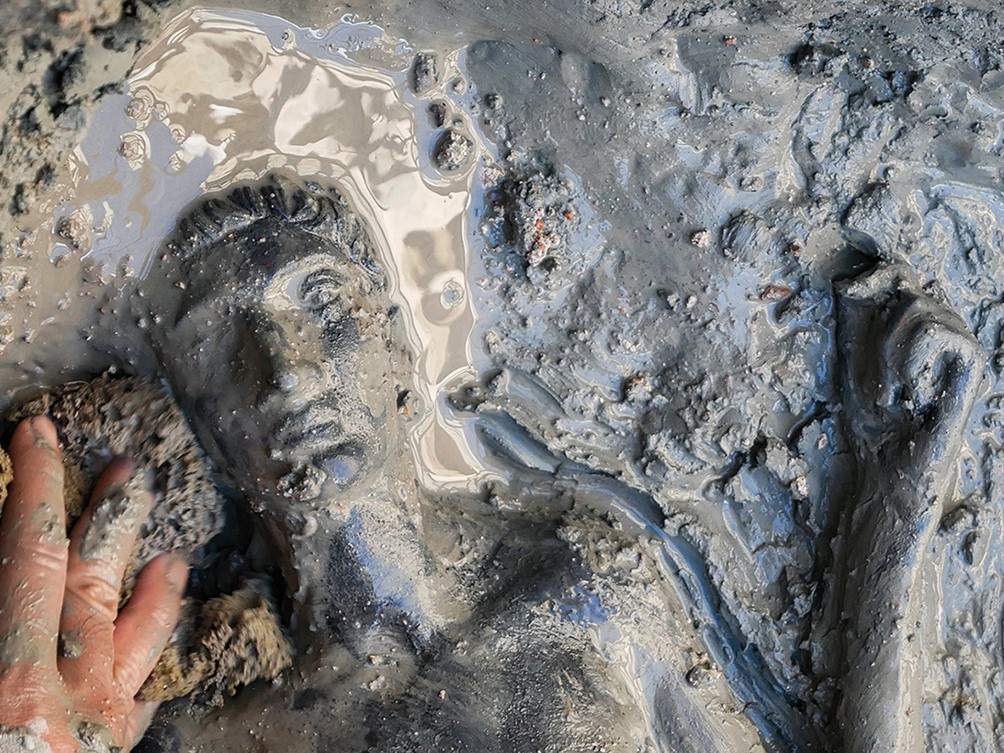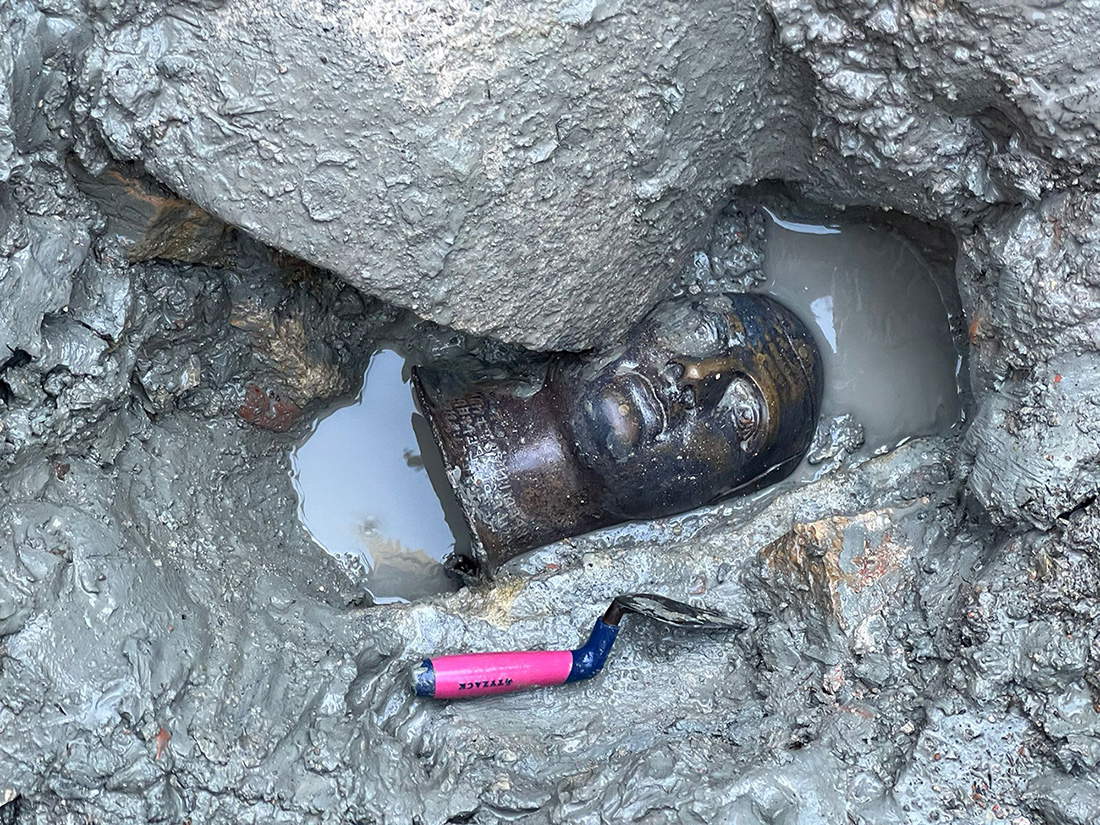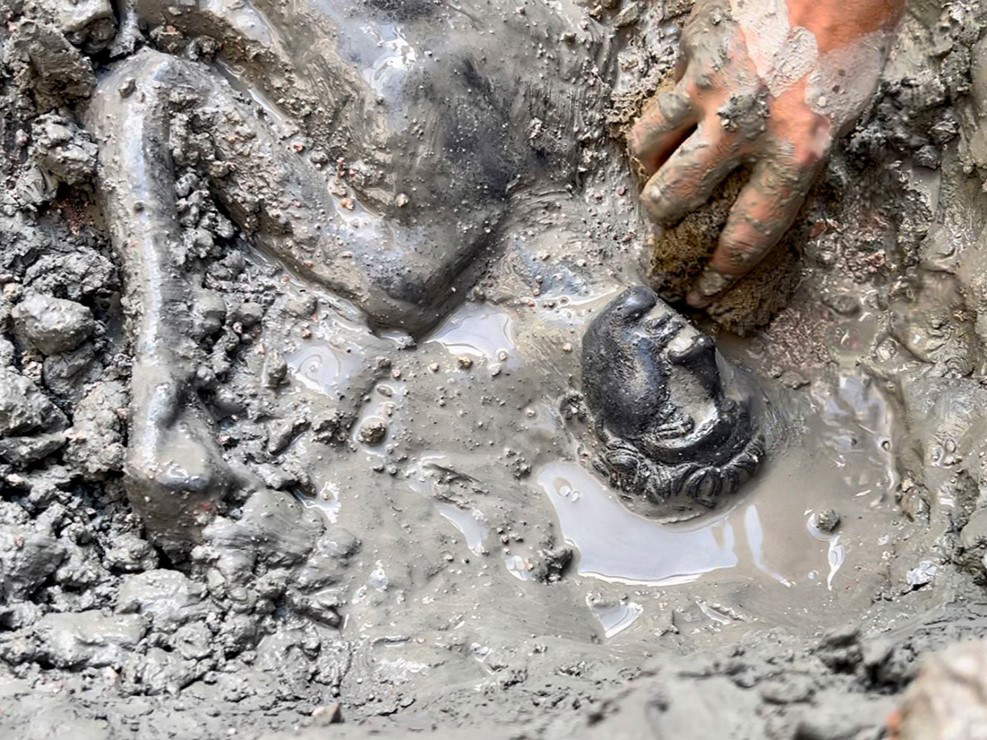The San Casciano bronzes are the world’s most important archaeological discovery of 2022. The statues found last year in the Roman sanctuary unearthed in San Casciano dei Bagni (Siena) in 2021, bronzes of exceptional archaeological value, have in fact won theInternational Archaeological Discovery Award "Khaled al-Asaad," a prestigious international prize awarded to the best world discovery of the year, which for the first time honors Italy. The award ceremony takes place at the Mediterranean Archaeological Tourism Exchange (BMTA) in Paestum, which this year, from Nov. 2 to 5, reaches its 25th edition.
Five were the archaeological discoveries that occurred in 2022 finalists for the 9th edition of the International Archaeological Discovery Award “Khaled al-Asaad” 2023: Egypt, for the discovery, in the ancient necropolis of Saqqara in Giza, about 30 km south of Cairo, of the pyramid of Queen Neith with 300 coffins and 100 mummies; Guatemala, for traces of the oldest Mayan calendar; Iraq, for a city of the Bronze Age reappeared from the Tigris River in the Mosul reservoir; Italy, for the discovery from the mud in the “Sanctuary Ritrovato” of the “Bagno Grande” in San Casciano dei Bagni, in the province of Siena; Turkey, for the discovery in Midyat, in the province of Mardin, of a large underground city dating back 2.000 years ago.
 The St. Casciano
The St. Casciano The St. Casciano bronzes at
The St. Casciano bronzes atThe Prize will be presented to the Mayor of San Casciano dei Bagni Agnese Carletti representing the Municipal Administration that owns the area and to Jacopo Tabolli scientific coordinator of the excavation today, Friday, Nov. 3 at 6:30 p.m., at the Next, former Cafasso Tobacco Factory, on the occasion of the XXV Mediterranean Archaeological Tourism Exchange. Edmondo Cirielli Deputy Minister of Foreign Affairs and International Cooperation will preside over and present the award.
Dating from between the second century B.C. and the first century A.D., the St. Casciano statuettes have been protected for 2,300 years from the mud and boiling water of the votive sanctuary’s sacred pools along with coins, votive offerings and Latin and Etruscan inscriptions. The sanctuary, with its seething pools, sloping terraces, fountains, and altars, existed since at least the third century B.C. and remained active until the fifth century A.D., when, in Christian times, it was closed but not destroyed. The pools were sealed with heavy stone columns and the deities dutifully entrusted to the water, so removed that cover is in fact the largest repository of statues in ancient Italy. The statues, five of them nearly a meter high, are perfectly intact and were most likely made by local craftsmen: effigies of the Sacred Fountain and Apollo, while the exceptional state of preservation of the statues within the hot spring water has preserved wonderful inscriptions in Etruscan and Latin engraved before they were made.
Arranged in part on the branches of a huge tree trunk fixed to the bottom of the pool, in many cases covered with inscriptions, the statues as well as the countless votive offerings, come from the great families of the territory of inland Etruria (from the Velimna of Perugia to the Marcni known in the Chiusi and Siena countryside) and beyond, exponents of the elites of the Etruscan and later Roman worlds, landowners, local squires, the wealthy classes of Rome and even emperors. Here, surprisingly, the language of the Etruscans seems to survive much longer than the canonical dates in history.
The discovery represents a model of collaboration between the municipality (in 2019 it began to finance the excavation of the Bagno Grande, after buying the private land and applying for the concession, entrusting the operational direction to Emanuele Mariotti), the Ministry of Culture (ABAP General Directorate in collaboration with the Superintendence for the provinces of Siena, Grosseto and Arezzo), the Scientific Direction of the excavation (Jacopo Tabolli, professor at the University for Foreigners of Siena), local volunteers (Archaeological Association “Eutyche Avidiena”), with the collaboration of specialists from all disciplines: from architects to geologists, archaeobotanists to epigraphy and numismatics experts from multiple universities around the world.

 The St. Casciano bronzes at
The St. Casciano bronzes at“I am honored to receive this award on behalf of the municipal administration, those that preceded me and the San Casciano community,” says Agnese Carletti, mayor of San Casciano dei Bagni. “A further recognition of the desire to go in search of our roots that today even leads us to represent Italy in a prestigious international context. This award, which is presented to us by the Deputy Minister of Foreign Affairs and dedicated to those who sacrificed their lives to save archaeological heritage and thus the history of peoples from human fury, represents a moment of building the society we would like to live, today more than ever, a society in which history is knowledge and knowledge is an instrument of peace.”
“I am very honored to receive this award on behalf of the archaeology students who from Italy and all over the world come to San Casciano dei Bagni every summer to dig with Emanuele Mariotti, with Ada Salvi and with me,” says Jacopo Tabolli, scientific director of the excavations. “Ours is an experiment in civic archaeology where protection, research, enhancement and fruition coexist and which has made public communication one of its constituent features. The University for Foreigners of Siena, which has as its mission the promotion of multiculturalism and multilingualism, finds in the warm waters of Bagno Grande in San Casciano a perfect synthesis of a landscape where the welcoming of the foreigner, of the other, is set in bronze.”
The BMTA, in collaboration with the magazine Archeo, has since 2015 recognized the most significant archaeological discoveries through a Prize awarded in collaboration with the Exchange’s international archaeological media partner publications: Antike Welt (Germany), arCHaeo (Switzerland), AiD Archäologie in Deutschland (Germany), Archéologia (France), Current Archaeology (UK), and Dossiers d’Archéologie (France). The Prize is named after Khaled al-Asaad, the archaeologist of the Palmyra site who paid with his life for the defense of cultural heritage. It is the only award worldwide dedicated to archaeological discoveries and its archaeologists, who with sacrifice, dedication, expertise and scientific research face their task daily in the dual capacity of scholars of the past and professionals serving the territory.
 |
| St. Casciano bronzes honored as world's best archaeological discovery 2022 |
Warning: the translation into English of the original Italian article was created using automatic tools. We undertake to review all articles, but we do not guarantee the total absence of inaccuracies in the translation due to the program. You can find the original by clicking on the ITA button. If you find any mistake,please contact us.